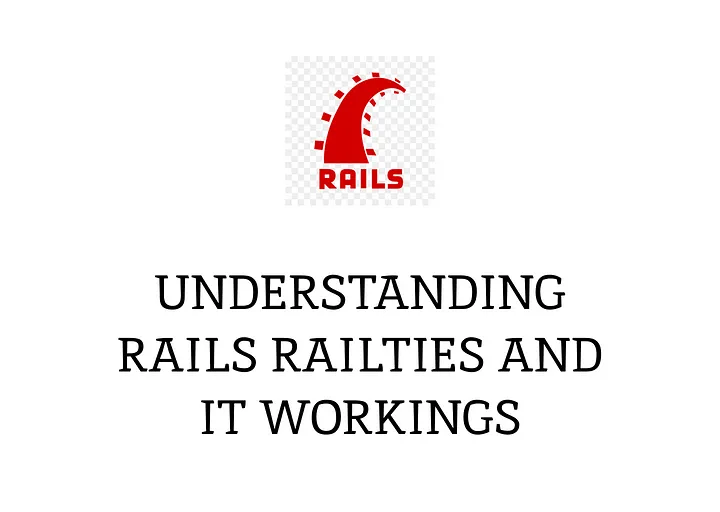Rails: Understanding Railties and How it’s Registered
•
14 March 2024
•
6 mins

If you have ever worked with Rails, you would have seen the application file. Located in the config folder (/config/application.rb). This file is where we register rails gems that need to load some code on rails initialization. These files are called Railties
require_relative 'boot'
require "rails"
# Pick the frameworks you want:
require "active_model/railtie"
require "active_job/railtie"
require "active_record/railtie"
require "active_storage/engine"
require "action_controller/railtie"
require "action_mailer/railtie"
require "action_mailbox/engine"
require "action_text/engine"
require "action_view/railtie"
require "action_cable/engine"
# require "sprockets/railtie"
require "rails/test_unit/railtie"
# Require the gems listed in Gemfile, including any gems
# you've limited to :test, :development, or :production.
Bundler.require(*Rails.groups)
module MedicoBackend
class Application < Rails::Application
.
.
.In a scenario where you want to load some code during rails initialization, you can consider writing your own railtie. You can use this article as a guide.
The Question: Billion Ruby One
When we see this file, we add our railties there and be done with it. But, how about we ask, how is it possible that Rails can run the code with just requires to class definitions? Where is Rails initializing these classes? Is Rails checking this specific folder?
Let’s try to answer these questions and have clarity.
The Starting Point: On your Mark
The genesis of answering this question is from the environment file. Which is also located in the config folder (/config/environment.rb). This file calls the application file and initialize! function.
# Load the Rails application.
require_relative 'application'
# Initialize the Rails application.
Rails.application.initialize!The first line calls the file which registers all the railties. The file that made us interested in this article.
The intialize!: Rabbit Hole
The second line is the start of the rabbit hole. this line calls the initialize! method defined in Rails source code. It is defined in the Application class which our application inherits from. the source.
def initialize!(group = :default) # :nodoc:
raise "Application has been already initialized." if @initialized
run_initializers(group, self)
@initialized = true
self
endAs you can see, intialize! method in turn calls the run_initializers. this method is in a module file in Rails. it is accessible to this call because the superclass (Rails::Railtie) included the module in its definition. the source.
def run_initializers(group = :default, *args)
return if instance_variable_defined?(:@ran)
initializers.tsort_each do |initializer|
initializer.run(*args) if initializer.belongs_to?(group)
end
@ran = true
end
def initializers
@initializers ||= self.class.initializers_for(self)
endMoving forward. As you will notice in the earlier block of code, I added another method initializers. I added that because it caused me a whole lot of confusion. Let me explain.
In the method run_initializers, we call initializers. You would think that the method I added was what is being called, but it is not. Ideally, you would be correct but, Application class has overridden this method. So the other method was what was being called. the source.
def initializers # :nodoc:
Bootstrap.initializers_for(self) +
railties_initializers(super) +
Finisher.initializers_for(self)
endThis caused me a lot of frustration. This method then calls the railties_initializers method. the source.
def railties_initializers(current) # :nodoc:
initializers = []
ordered_railties.reverse.flatten.each do |r|
if r == self
initializers += current
else
initializers += r.initializers
end
end
initializers
endrailties_initializers method calls ordered_railties method. the source.
def ordered_railties # :nodoc:
@ordered_railties ||= begin
order = config.railties_order.map do |railtie|
if railtie == :main_app
self
elsif railtie.respond_to?(:instance)
railtie.instance
else
railtie
end
end
all = (railties - order)
all.push(self) unless (all + order).include?(self)
order.push(:all) unless order.include?(:all)
index = order.index(:all)
order[index] = all
order
end
endFollowing the pattern, ordered_railties then calls railties method. the call is on the line 13 (all = (railties — order)). the source.
def railties
@railties ||= Railties.new
endAt last, we meet the real culprit. Railties.new. This code is initializing a class. Let see the class. the source.
# frozen_string_literal: true
module Rails
class Engine < Railtie
class Railties
include Enumerable
attr_reader :_all
def initialize
@_all ||= ::Rails::Railtie.subclasses.map(&:instance) +
::Rails::Engine.subclasses.map(&:instance)
end
def each(*args, &block)
_all.each(*args, &block)
end
def -(others)
_all - others
end
end
end
endFrom the class, you can see in the initialize method, that Rails is calling the subclasses method of Rails::Railtie. Which, if you remember is a pre-requisite of creating a railtie. the subclasses method will return all the classes we registered. Instantiate it by calling the instance method on it and then rails run the codes you add on it.
NB: The subclasses method is defined in rails (ActiveSupport). But as of ruby 3.1, ruby have added subclasses to classes. Another article to dig into that.
Conclusion: Climb Out
It’s time we climb out of the rabit hole. We can see that rails is using the base class to fetch all the subclasses and then initialize them and run code in them. So no, rails is not checking a specific folder.
Thanks for your time and happy coding.